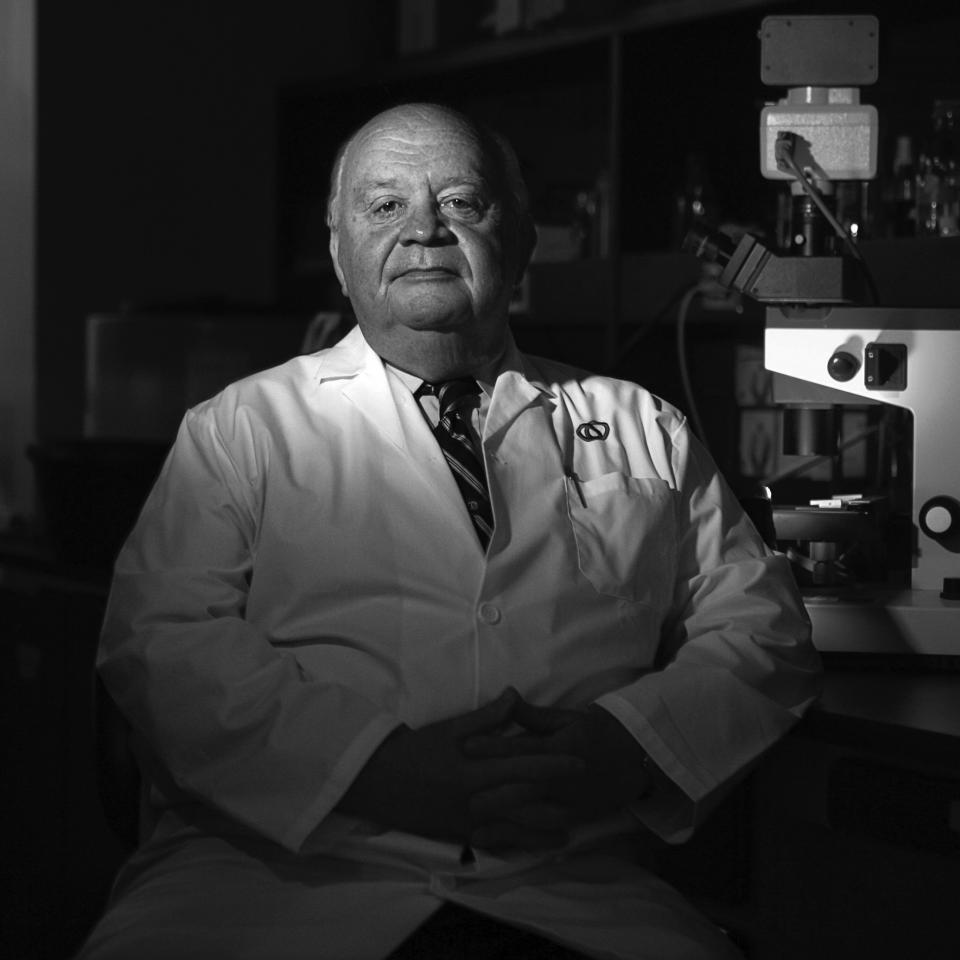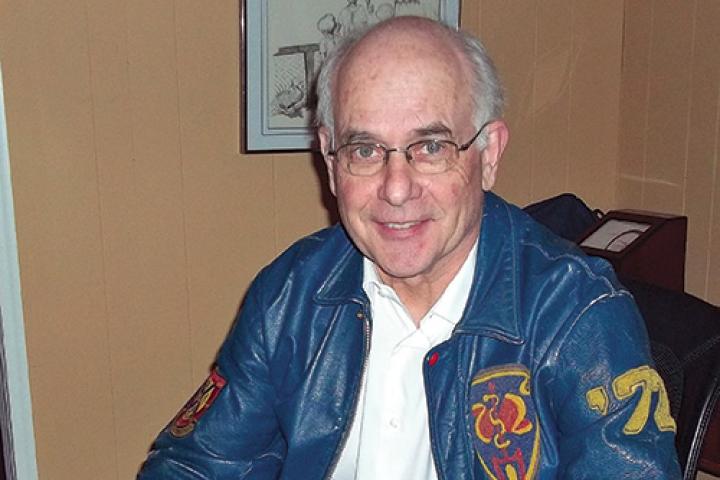While doing his PhD in experimental pathology at Queen’s University, Adolfo J. de Bold, MSc’71, PhD’74, decided to tackle a mystery not even Nobel Prize winner George Palade could crack – namely, figuring out how to see and then determining the purpose of some conspicuous-looking cells inside the heart.
With his wife, Mercedes Kuroski de Bold (MSc’71, PhD’75), and a team collaborating under his leadership, Dr. de Bold discovered and solved the mystery. The granular-looking cells in the heart produce a key hormone responsible for regulating salt concentrations in the body. And that discovery had an impact on the course of heart treatment, created a race for a patent in later clinical applications, and landed him a job as the first director of research at the foremost cardiovascular care centre in Canada, the world-renowned University of Ottawa Heart Institute. The pioneering scientist worked at the Heart Institute from 1986 until 2013, when he retired at the age of 71. Dr. de Bold passed away on Oct. 22, 2021, a few months shy of his 80th birthday.
Adolfo and Mercedes de Bold began their studies at Queen’s in 1968 after arriving from their native Argentina. Through a mutual contact made during their undergraduate studies at the National University of Córdoba in Argentina, Dr. de Bold met Dr. Sergio Bencosme, a Queen’s professor, researcher, and experimental pathologist. Dr. Bencosme became the couple’s thesis supervisor. As his graduate students, the de Bolds went into investigative research, she on the pancreas and he on the heart. Dr. de Bold honed his techniques during his master’s and PhD theses, investigating the composition of these mysterious granules inside the heart.
Dr. de Bold’s path began with better seeing these microscopic granules, which needed magnification using an electron microscope and advanced tissue sampling methods due to their scarcity. Then he developed methods to study their actual purpose. Over the course of nearly a decade, Dr. de Bold and his team innovated new and adapted existing techniques to successfully illuminate these cells and determine that they contained a protein that gave them a telltale endocrine function, similar to cells found in the pancreas or pituitary gland. In experiments, he found that animals treated with a low-sodium diet and water increased the number of granules observed, whereas the opposite occurred in animals on a high-sodium diet. It thus became clear that these granules contained a hormone that was being secreted by the heart and it exerted its effects on the kidney, confirming his assertion that the heart “is not only a pump, but a smart one.”
A Globe and Mail obituary described Dr. de Bold as the “father of cardiovascular endocrinology.” His contributions in medical science were recognized in Canada and worldwide.
The discovery was initially viewed with skepticism due to the long-standing understanding and definition of the heart as a pump. Reshaping the existing definition of the heart to classify it as an endocrine organ required further proof and Dr. de Bold’s seminal paper in 1981 detailed the hormone he found – he called it atrial natriuretic factor (ANF). He demonstrated that the hormone regulates salt and water in the body, thus affecting blood pressure (akin to how the pancreas produces insulin, regulating sugar and impacting blood-sugar levels). The discovery led to a new understanding of the heart and possible treatments for high blood pressure and heart failure.
A Globe and Mail obituary described Dr. de Bold as the “father of cardiovascular endocrinology.” His contributions in medical science were recognized in Canada and worldwide, highlighted when he was appointed to the Order of Canada, inducted into the Canadian Medical Hall of Fame, awarded the prestigious Grand Prix Scientifique de la Fondation Lefoulon-Delalande from the Institute of France, and even nominated for a Nobel Prize in medicine.
Dr. de Bold became an assistant professor at Queen’s in 1973 and continued to work alongside his wife while the two raised five children – four sons and a daughter. Dr. de Bold left Kingston, a city his family cherished, when Heart Institute founder and famed cardiovascular surgeon Dr. Wilbert Keon invited him to build its new research centre.
Dr. Kuroski de Bold says it was too good an opportunity to pass up, particularly as it meant staying in their adopted country of Canada, and not relocating to the U.S., where the couple never contemplated going.
“We liked the way the science was being done here in Canada,” she says. “We left our native Argentina keen to learn and see how effective research was done.”
It was also something that Dr. de Bold was able to pass on; as professor of pathology and head of cardiovascular endocrinology, he was a thesis supervisor to post-graduate students who came from all over the world to study under his tutelage. He felt strongly about providing opportunities for others to study and learn.
Throughout their marriage, Dr. Kuroski de Bold and her husband travelled often to medical conferences all over the world. Sometimes they both presented papers and other times it was one or the other.
“It was a nice exchange of ideas,” she says of their 53-year marriage. “It was a nice balance between work and family life.”
They also made returning to their alma mater in Córdoba a priority, especially to share with students and faculty how science was being done in Canada.
“He did like to [encourage] young people to think about science,” Dr. Kuroski de Bold says, though none of their children ended up following their parents’ footsteps in science, with son Alex noting that their father’s shoes were “too big to fill” in that field.
When he wasn’t working in the laboratory, Dr. de Bold’s passion was carpentry. His persistence, tenacity, and ambition were evident as he prepared for retirement by embarking on building a 25-foot mahogany boat. That project would take almost 10 years to complete – he christened it Miss Cecilia, after the couple’s only daughter and first granddaughter, when he retired.
Ever the lifelong learner, Dr. de Bold is one of Canada’s most cited authors. He published his last scientific paper in 2020.


